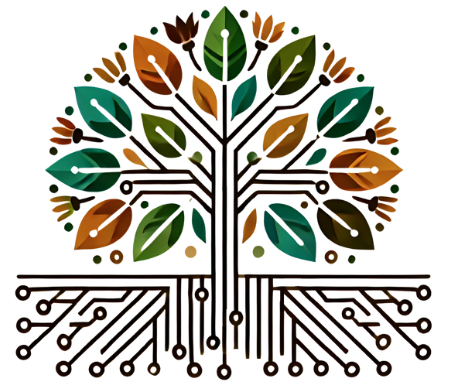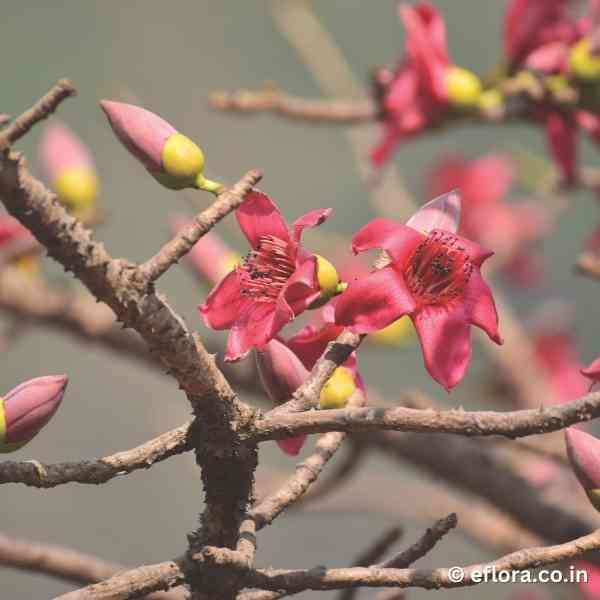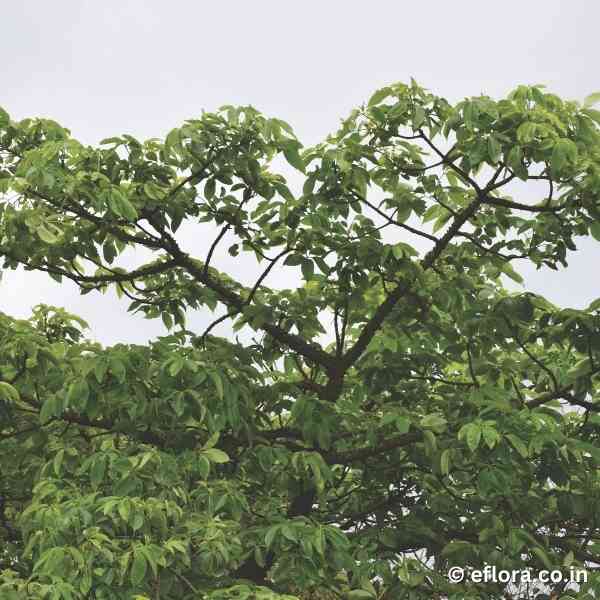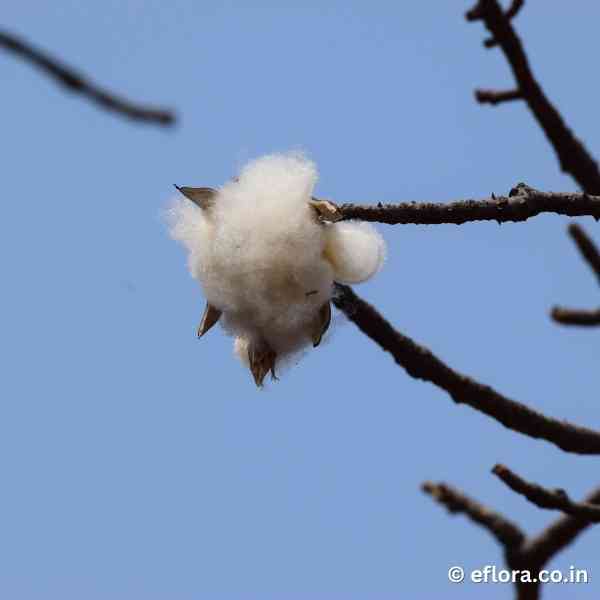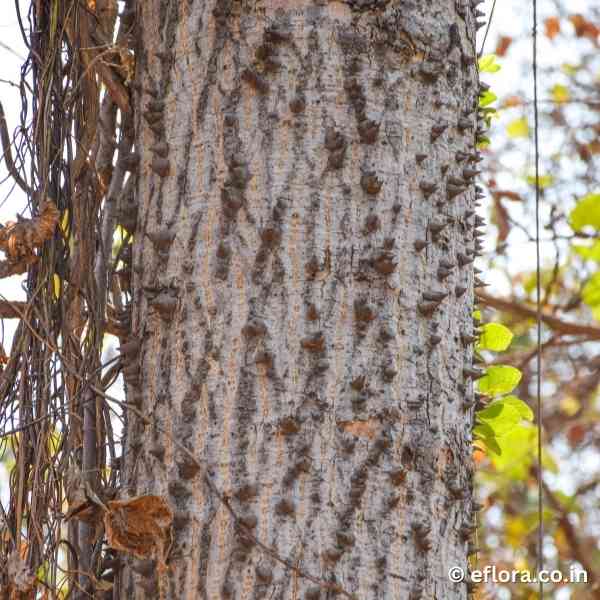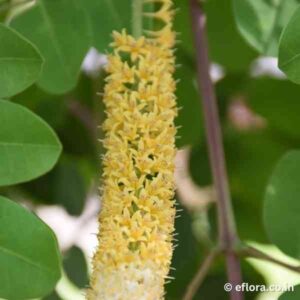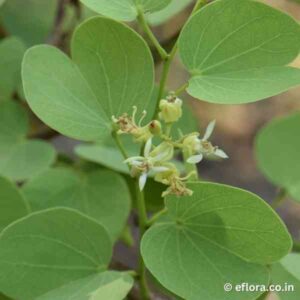Bombax ceiba (Silk Cotton Tree)
A deciduous tree with a spreading crown; it can grow up to a height of 25 m or more. The straight, cylindrical bole is usually very spiny on young trees, it has prominent buttresses. Leaves palmate with 5-7 leaflets, which are oblong to oblong-lanceolate. Flowers solitary, terminal, bright red, ca. 10 cm in diam. Fruit ellipsoid, densely grey-white villous and stellate puberulent.
Flowering & Fruiting: January-May.
Etymology: The genus name “Bombax” originates from the Greek word bombyx, meaning silk, referring to the silky hairs surrounding the seeds. The Latin bombyx (genitive bycis) also means silk-worm, silk, or any fine fiber [11]. The specific epithet “ceiba” is Latinized version of the South American name for the silk cotton tree.
